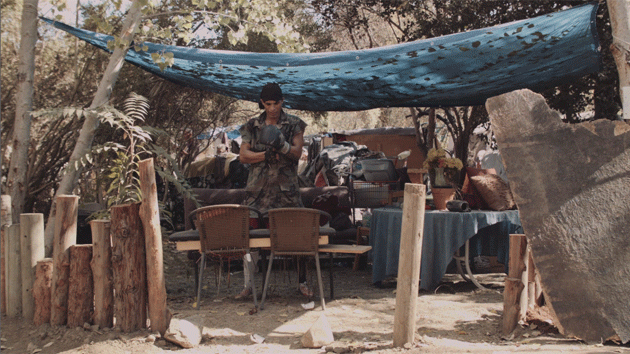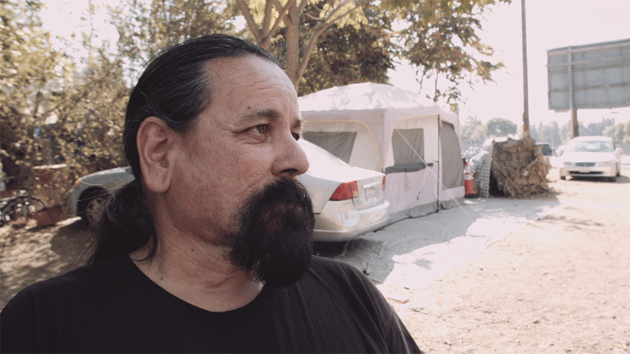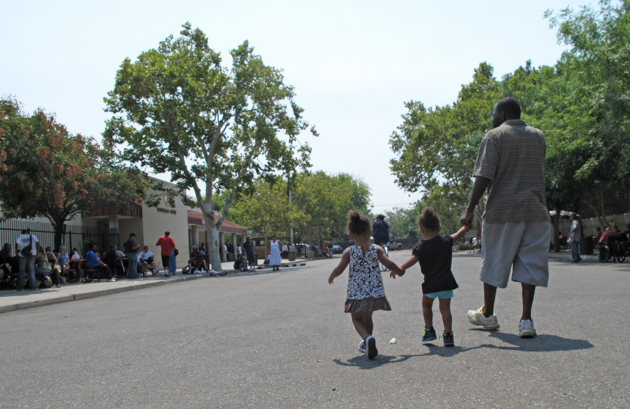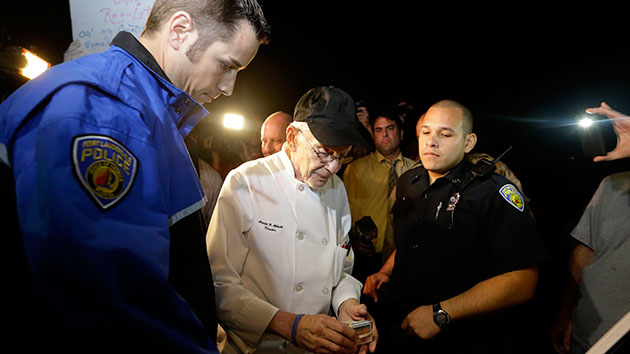
One of many encampments at the Jungle, the nation's largest homeless communityPrashanth Kamalakanthan
CORRECTION: Based on numerous eyewitness reports, this video reported that the homeless individual Lydia Hernandez was attacked and killed in the Jungle in October. Residents now say that Hernandez survived the attack.
In the heart of Silicon Valley, a stone’s throw from Apple’s headquarters, is a 68-acre homeless camp that’s widely believed to be the largest in the country. The Jungle, as it’s known, is more accurately described as a shantytown: a collection of shacks, adobe dugouts, and treehouses inhabited by some 300 people, many of whom have lived here for years. In a land of million-dollar bungalows, it’s a last place of refuge for many locals who’ve missed out on the booming tech economy.
All of that is about to change, however. Citing safety and sanitation concerns, the city of San Jose says the Jungle’s inhabitants must move out by Wednesday; whatever they can’t take with them will be demolished and hauled off before Christmas.
“These people have houses, and even though they are not traditional homes, they have been living here for years,” says Robert Aguirre 60, an unemployed electrical engineer who has camped in the Jungle for six months. “And now they are going to kick them out and they are going to be completely homeless.”
San Jose is spending $4 million to give 200 Jungle residents vouchers for subsidized housing. But it’s far from enough, residents say. Overwhelming demand for vacant apartments allows landlords to rent to people with perfect credit histories and known addresses. “Saying, ‘Oh, well, I live in the Jungle’—that’s unacceptable,” says Agurirre, who has been using his voucher to look for a place to live since July.
“It’s hard for us to find spaces for folks, especially when they are competing with young techies,” admits Ray Bramson, the city’s homelessness response manager.
Despite Silicon Valley’s immense wealth—or, perhaps, because of it—San Jose and surrounding Santa Clara County have the nation’s highest rate of homeless living on the streets. And despite popular perception, most of these folks didn’t move here looking for a free ride. Three-quarters of its 7,500 homeless residents were born in the county, and most live in one of the county’s 247 tent cities, not in homeless shelters. Many of them have jobs, yet don’t make enough to afford housing.
Aguirre, for instance, did tech consulting for Dell, Apple, and Cisco in the 1990s before losing his business when Valley companies outsourced manufacturing to China. His wife’s salary as a full-time medical clerk wasn’t enough to pay the bills. For more on how the couple gets by, read his first-person account of life in the Jungle.








